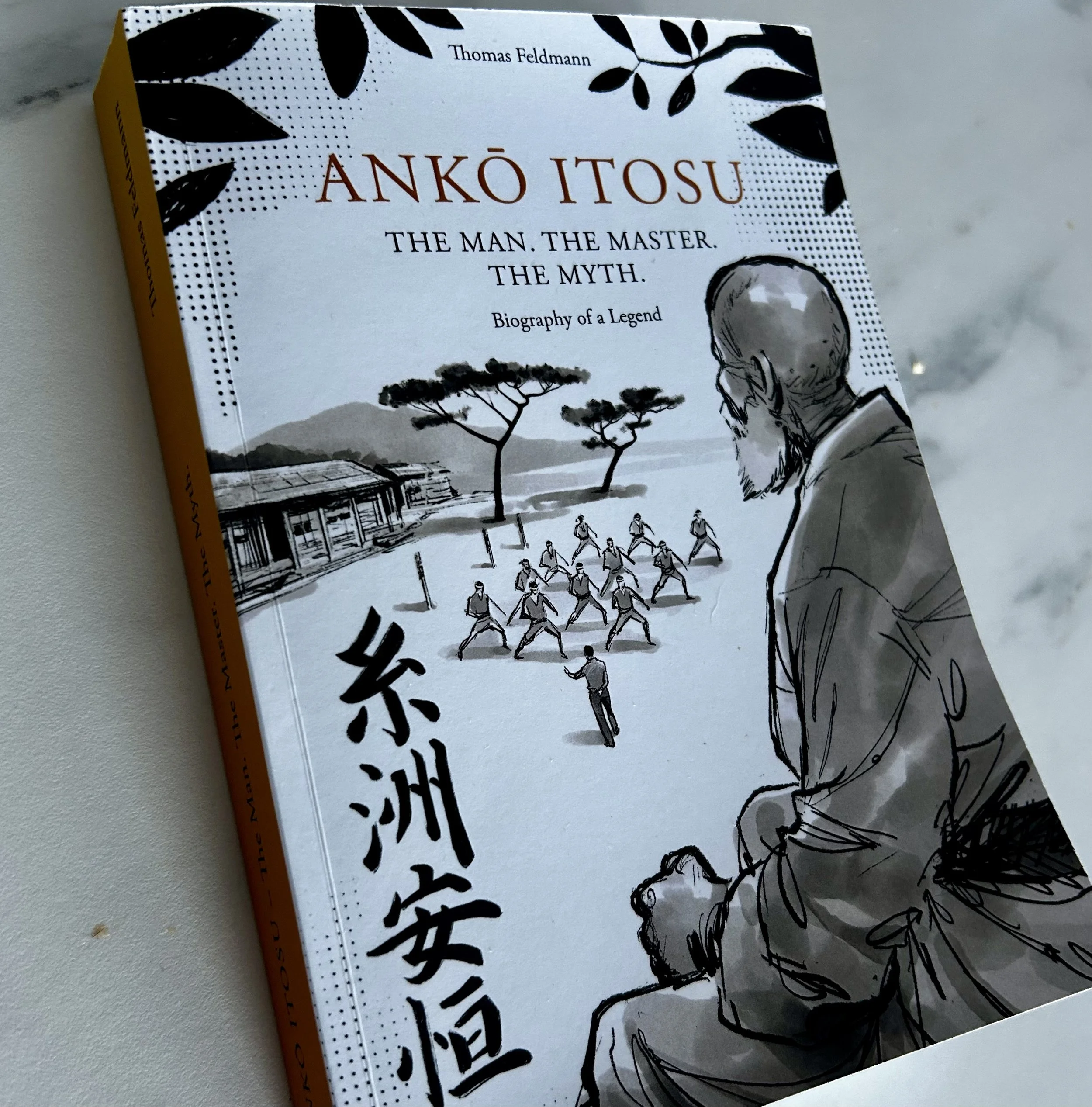Three Giants Who Shaped Our Martial Arts Path
By Roy Rolstad, VI Dan, ITF Taekwon‑Do
I’ve been diving into Ankō Itosu: The Man, the Master, the Myth – A Biography of a Legend by Thomas Feldman, and it’s sparked some serious reflection. Over the years I’ve consumed numerous works on martial arts pioneers, including Gichin Funakoshi and General Choi Hong Hi, but Feldman’s portrayal of Itosu hits differently. What truly resonated is that all three of these transformative figures started life small, weak, and sickly, and yet each grew into a martial arts titan.
That’s powerful.
Not only did they personally overcome adversity, but each left a profound mark on what eventually became the martial arts systems we train in today: Te, Karate, Taekwon‑Do. Three distinct names, one shared legacy.
1.
Ankō Itosu – The Reformer
In Feldman’s masterful biography, Itosu emerges as a groundbreaking educator and martial innovator. His greatest achievement? Simplifying traditional Okinawan martial arts and introducing them to the public school system in Okinawa. With that move, martial arts ceased to be a secretive practice and instead became accessible to every child on the island.
That shift wasn’t merely cultural, it was revolutionary. If you’ve yet to read my Taekwon‑Do commentary on Itosu’s Ten Precepts, you can find it here:
👉 The Roots of Modern Karate: Itosu Ankō’s Ten Precepts with Taekwon-Do Commentary
2.
Gichin Funakoshi – The Ambassador
Two decades later, Itosu’s student Gichin Funakoshi made his way to mainland Japan. As a teacher at Keio University, he crossed paths with Jigoro Kano and helped legitimize “Karate” within Japan’s educational framework.
Like his master, Funakoshi emphasized character, humility, and discipline, rebranding martial arts as a holistic discipline rather than mere combat. His legacy endures in countless dojangs and dojo across the globe.
3.
General Choi Hong Hi – The Globalizer
About thirty years after Funakoshi, General Choi Hong Hi introduced martial arts into the newly-formed Korean army. Drawing on Karate, Chinese traditions, indigenous Taekkyon, and military training, Choi crafted the core of what we now know as Taekwon‑Do.
In 1966, he founded the International Taekwon‑Do Federation (ITF), catapulting the art onto the global stage. More than just kicks and blocks, Choi’s vision built national identity, personal growth, and international diplomacy.
Standing on Their Shoulders
Whenever I teach a self‑defense sequence, explore a new pattern, or explain a concept to students, I pause and reflect: This all began with a frail boy on an island. Then another. Then another.
Itosu opened the door.
Funakoshi walked through it.
Choi paved the highway.
These men weren’t born legends. They became legends, through grit, vision, humility, and dedication, and they built paths for the rest of us to follow.
In ITF Radix, where we reconnect patterns to purpose, it’s vital to remember their lineage. These arts are not solely Korean, Japanese, or Okinawan, they are a collective human legacy, shaped through generations of transformation and insight.
So when you bow in next time, remember: you’re not just practicing movement. You’re honoring a heritage of resilience, clarity, and transformation.
-Roy Rolstad
#Legacy #ITFRadix #Itosu #Funakoshi #ChoiHongHi #TaekwonDoHistory #PatternsWithPurpose

